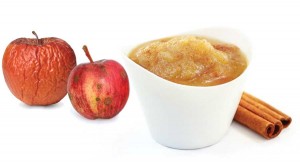Why imperfect food should find its way to our tables
03 Jan 2016
 Welcome to the modern agricultural system. “We put an enormous amount of resources into food, which is why minimizing food waste is so important,” says Hana Dansky of Boulder Food Rescue (BFR), a nonprofit devoted to placing perishables in hungry bellies. “Fifty percent of our land use and 80 percent of our freshwater resources go to agriculture. Then we throw 40 percent of it out, sometimes before it even reaches anyone’s home.”
Welcome to the modern agricultural system. “We put an enormous amount of resources into food, which is why minimizing food waste is so important,” says Hana Dansky of Boulder Food Rescue (BFR), a nonprofit devoted to placing perishables in hungry bellies. “Fifty percent of our land use and 80 percent of our freshwater resources go to agriculture. Then we throw 40 percent of it out, sometimes before it even reaches anyone’s home.”

Spoiled Rotten
Even if they make it to your fridge, perishables may not make it to your mouth. A 2015 study by the American Chemistry Council reported that the average American dumps $640 worth of food per year (the U.S. government estimates the cost per household per year to be around $900). And sell-by dates encourage people to toss what’s often still perfectly good—especially when it comes to eggs, dairy products and meats.

Photos: Shutterstock.com

(Photos: Shutterstock.com)
Ways to Pitch In
Unless you’re the owner of a national grocery store, it’s hard to know how individuals can reduce food waste in meaningful ways. “The first step is awareness,” Dansky says. “Awareness had to grow in Europe before the grocery stores responded.” That can mean posting on social media or asking grocery stores that don’t work with food redistributors about their food waste. According to Dansky, Safeway, King Soopers and Trader Joe’s do not work with BFR to redistribute last-minute perishable items. However, Safeway donates nonperishables locally through food banks like Louisville’s Community Food Share (CFS). King Soopers confirmed that it supplies items to Boulder’s Emergency Family Assistance Association (EFAA) and recently instituted a company-wide composting program. Whole Foods, which works with BFR, also repurposes bruised produce in its prepared-foods section—as juices and salads, for example. Trader Joe’s declined to comment.












